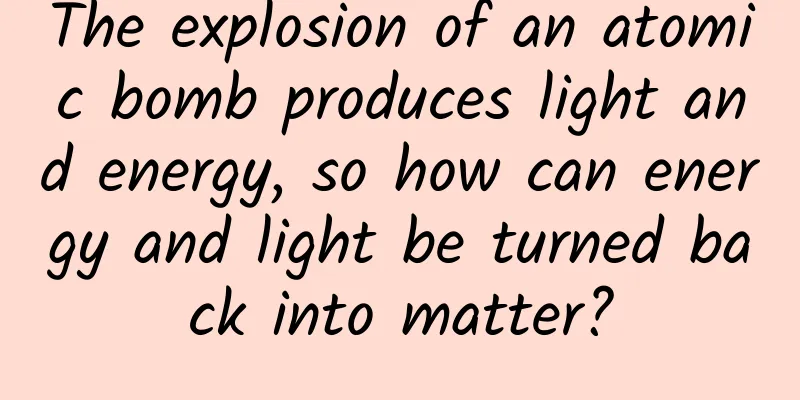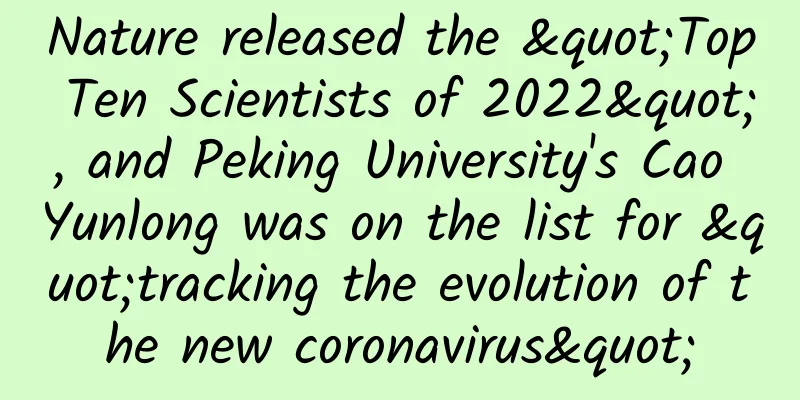The explosion of an atomic bomb produces light and energy, so how can energy and light be turned back into matter?

|
Minutes after the Big Bang, the first particles of matter and antimatter were created. We are now familiar with the reverse process in everything from campfires to atomic bombs: matter creates energy, but it has been difficult to reproduce the crucial transition from light to matter. Now, a team led by Alexey Arefeev of the University of California, San Diego, has conducted a new set of simulations that point the way to making matter from light. The process begins by aiming high-powered lasers at a target to generate a magnetic field as strong as that of a neutron star. "This field generates gamma-ray radiation, which collide with each other, creating pairs of matter and antimatter particles for the briefest of moments," said Arefiev, associate professor of mechanical and aerospace engineering. "The study, published in the journal Physical Review Applied, provides a method that experimentalists at the Eastern European Extreme Light Infrastructure (ELI) high-power laser facility can emulate and produce real results within one to two years. Its results allow scientists to probe a fundamental process in the universe for the first time." Harnessing the power of ultra-high power The research team's colleagues in the Relativistic Laser-Plasma Simulation Group have been studying for years how to create ultra-intense, directed beams of energetic radiation, and the research is supported in part by the National Science Foundation and the Air Force Office of Scientific Research. The study points out: One way to achieve this goal is to aim a high-powered laser at a target to generate a very strong magnetic field, which in turn releases an intense release of energy. High-intensity, ultra-short laser pulses aimed at dense targets can make the target "relatively transparent" because the electrons in the laser move at speeds very close to the speed of light, effectively becoming heavier. This prevents the laser's electrons from moving to protect the target from being hit by the laser. As the laser pushes past these electrons, it creates a magnetic field as strong as the gravity on the surface of a neutron star and more than 100 million times stronger than Earth's magnetic field. It's no exaggeration to say this all happens in the blink of an eye, and the magnetic field exists for 100 femtoseconds (a femtosecond is a tenth of a second - a quadrillionth of a second). But "from the laser's perspective, the field is quasi-static, and then again, from the laser's perspective, we've probably lived longer than the universe has." In this case, high-power lasers are lasers in the petawatt range, and a petawatt is a million watts. By comparison, the sun delivers about 174 petawatts of solar radiation to Earth's entire upper atmosphere, and a laser pointer can deliver about 0.005 watts of power to power a PowerPoint slide. Previous simulations had shown that the laser would have to be high-powered and aimed at a tiny spot of light to produce the intensity needed for a strong enough magnetic field. The new simulations show that by increasing the size of the focal spot and boosting the laser power to around 4 petawatts, the intensity of the laser could be kept the same and still produce a strong magnetic field. The simulations show that under these conditions, the laser-accelerated electrons of the magnetic field stimulated the emission of high-energy gamma rays. Particle Pair One of the interesting things is the creation of paired particles of matter and antimatter (electron-positron pairs). These particles can be created by colliding two gamma-ray beams or by colliding a gamma-ray beam with blackbody radiation, an object that absorbs all radiation that falls on it. Scientists have accomplished the feat of transforming light into matter before, notably in a 1997 experiment at Stanford University, but that method required an additional stream of high-energy electrons, while the new method "just uses light to create matter." The Stanford experiment "produced a pair of particles about once every 100 times." An experiment that created matter using only light more closely simulates conditions in the universe's first few minutes, providing an improved model for researchers hoping to learn more about this critical time period. The experiment could also provide more opportunities to study antimatter particles, which remain a mysterious part of the universe's makeup. For example, scientists are curious to learn more about why there seems to be more matter in the universe than antimatter, when the two should be present in equal amounts. Boco Park | Research/From: University of California, San Diego |
<<: 100 days, 1000 meters, a new starting point
>>: The Fly Restaurant, the Last Bite of Human Life in the Wave of Food Industrialization
Recommend
Practical Douyin promotion skills, teach you how to play Douyin from scratch!
In the past two years, the traffic dividend has b...
[2021 Summer] Senior 3 Mathematics Target Tsinghua and Peking University Class Sun Moyi
【2021 Summer】High School Mathematics Target Tsing...
The Shenzhou 19 launch is imminent. Here is a launch viewing guide for you to check.
On the morning of October 29, a press conference ...
Mercedes owner stopped other cars, cursed and smashed them. What exactly is the reason for "road rage"?
Recently, a video of a Mercedes owner cursing and...
iOS 16.4 official version is released, it is recommended to upgrade!
Early this morning, Apple pushed the official ver...
Unable to afford traffic, entrepreneurs face life and death every day!
Buying traffic has become a game that is no longe...
How much does a character entry on Baidu Encyclopedia cost? How much does Baidu People cost?
Since Baidu Encyclopedia has a relatively high we...
Ant's friends
Image source: antwiki Ants have clear division of...
The most powerful "poison king" in the snake world is not on land, but in...
About tens of millions of years ago, the ancient ...
Where in China is the most delicious mutton?
When winter comes, mutton becomes the main dish o...
How to make use of private domain traffic for brand promotion and marketing?
Through this article, you will be popularized wit...
1080P is eliminated: How long will it take for 4K to become fully popular?
In recent years, the electronic display market is...
What SEO factors should be considered during website construction?
Because the results of website construction are p...
Mid-Autumn Festival shock: Chang'e is actually a toad spirit?
The moon palace must have a special feeling, ever...
Design and implementation of the Spring Festival wallet large traffic reward system entry and display
Author: Zhao Jingmu The ByteDance Open Platform-W...









